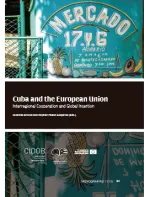Introduction and presentation of the book

Ever since official relations were established between the then European Economic Community (EEC) and Cuba in September 1988, shortly before the end of the Cold War, they have been conditioned by major changes in their respective regional environments and the global context.
After the Berlin Wall fell, the EEC’s external action towards Cuba went through various stages of rapprochement and estrangement. Several attempts were made to negotiate a bilateral agreement, but all failed, preventing the development of a stable, mutually beneficial, longterm relationship. The disappearance of the Soviet Union (USSR)– for decades Cuba’s main international ally – helped open up new spaces for cooperation between the island and the European Union (EU), which became an important trading partner and the largest provider of cooperation to Cuba from the 1990s onwards. Russia’s share of trade with Cuba fell from 68% in 1990 to just 6.1% in 2020, while EU member states’ contribution rose to 36%, ahead of China with 11%.